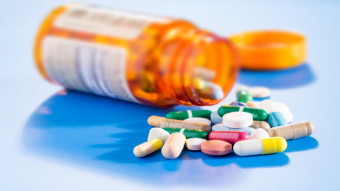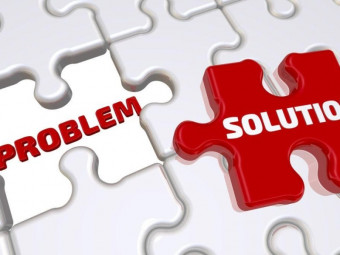Know Read Understand Piping Instrumentation Diagrams Pids
Tags: Piping
Learn how Process Control, Safety Instrumented Systems, Interlock & Alarms are represented in engineering P&ID drawings
Last updated 2022-01-10 | 4.4
- Understand and evaluate the purpose- content
- and importance of P&IDs to the construction
- commissionning
- safe operation and maintenance of a process plant
- Learn how to read
- interpret and successfully understand ALL P&IDs through numerous real industrial examples
- Identify the 5 key sections of your P&ID (title block
- grid system
- revision block
- notes and legend
- engineering drawing block)
What you'll learn
Understand and evaluate the purpose
content
and importance of P&IDs to the construction
commissionning
safe operation and maintenance of a process plant
Learn how to read
interpret and successfully understand ALL P&IDs through numerous real industrial examples
Identify the 5 key sections of your P&ID (title block
grid system
revision block
notes and legend
engineering drawing block)
Know and identify valve symbols on your P&IDs (gate
globe
ball
butterfly
needle…)
Know and identify valve actuator symbols on your P&IDs (pneumatic
hydraulic
electric
single acting spring return
double acting…)
Know the standards and conventions for valve status (open
closed
throttled)
Identify valve position and failure mode on your P&IDs (LO
LC
FO
FC
FAI…)
Know and identify process equipment symbols on your P&IDs (pumps
compressors
heat exchangers
columns
furnaces
reactors
vessels
containers
mixers…)
Know and identify piping symbols on your P&IDs (process
pneumatic
electric
hydraulic…)
Determine specific information about a process piping including type of material in the line
line size
line number and type of insulation when applicable
Know and identify pipe fitting symbols on your P&IDs (flanges
reductions
caps
spool pieces
unions…)
Know and identify the P&ID symbols of safety devices that are used to safely isolate
vent & drain process equipment for ease of maintenance (spectacle and spade blinds
double block and bleed valves…)
Know and identify pneumatic
electric
hydraulic and instrument signal lines on your P&IDs
Know and identify instrumentation symbols on your P&IDs (flow meters
temperature transmitters
pressure gauges…)
Know and identify the location of instruments
recorders
modifiers and controllers on your P&IDs (field mounted
board mounted
inaccessible…)
Know the lettering and numbering standards based on ISA symbolgy for piping
instruments and equipment designation on your P&IDs
Trace the flow of a process stream into your P&ID
through the pipes and equipment
and out of the P&ID
Understand the importance of process control and how it is displayed on your P&IDs
Successfully interpret basic process control schemes on your P&IDs
Understand the different process control options and how they are displayed on your P&IDs (cascade control
split range control
ratio control
batch control
selective control…)
Define the term Flow Control and explain how it is displayed on your P&IDs
Define the term Temperature Control and explain how it is displayed on your P&IDs
Define the term Pressure Control and explain how it is displayed on your P&IDs
Define the term Level Control and explain how it is displayed on your P&IDs
Understand the control of pressure in a pipe and explain how it is displayed on your P&IDs
Understand the control of flow in a pipe and explain how it is displayed on your P&IDs
Understand flow merging control and explain how it is displayed on your P&IDs
Understand flow splitting control and explain how it is displayed on your P&IDs
Understand centrifugal pump control systems (discharge throttling
variable speed drive
minimum flow…) and explain how they are displayed on your P&IDs
Understand positive displacement pump control systems (recirculation pipe
variable speed drive
stroke adjustment…) and explain how they are displayed on your P&IDs
Understand compressor control systems (capacity control
variable speed drive
anti-surge…) and explain how they are displayed on your P&IDs
Understand heat exchanger control systems (direct control
bypass control
back pressure control…) and explain how they are displayed on your P&IDs
Understand reactor temperature control systems and explain how they are displayed on your P&IDs
Understand fired heater control systems and explain how they are displayed on your P&IDs
Understand container and vessel control systems and explain how they are displayed on your P&IDs
Understand electric motor control systems (ON / OFF actions) and explain how they are displayed on your P&IDs
Know and understand the concept of Safety Instrumented Systems (SIS) and explain how safety instrumented functions are displayed on your P&IDs
Know and understand the concept of Alarm Systems and explain how alarms are displayed on your P&IDs
Identify safe operating limits based on system designs as displayed on your P&IDs
Know and understand how Fire and Gas Detection Systems (FGS) are displayed on P&IDs
Assess emergency situations and regulatory compliance issues using your P&IDs
* Requirements
* Some engineering or field knowledge is preferable but not mandatory. All the concepts are explained in depth using an easy to understand language to allow students to build their knowledge from the ground upDescription
- Understand and evaluate the purpose, content, and importance of P&IDs to the construction, commissionning, safe operation and maintenance of a process plant
- Learn how to read, interpret and successfully understand ALL P&IDs through numerous real industrial examples
- Identify the 5 key sections of your P&ID (title block, grid system, revision block, notes and legend, engineering drawing block)
- Know and identify valve symbols on your P&IDs (gate, globe, ball, butterfly, needle…)
- Know and identify valve actuator symbols on your P&IDs (pneumatic, hydraulic, electric, single acting spring return, double acting…)
- Know the standards and conventions for valve status (open, closed, throttled)
- Identify valve position and failure mode on your P&IDs (LO, LC, FO, FC, FAI…)
- Know and identify process equipment symbols on your P&IDs (pumps, compressors, heat exchangers, columns, furnaces, reactors, vessels, containers, mixers…)
- Know and identify piping symbols on your P&IDs (process, pneumatic, electric, hydraulic…)
- Determine specific information about a process piping including type of material in the line, line size, line number and type of insulation when applicable
- Know and identify pipe fitting symbols on your P&IDs (flanges, reductions, caps, spool pieces, unions…)
- Know and identify the P&ID symbols of safety devices that are used to safely isolate, vent & drain process equipment for ease of maintenance (spectacle and spade blinds, double block and bleed valves…)
- Know and identify pneumatic, electric, hydraulic and instrument signal lines on your P&IDs
- Know and identify instrumentation symbols on your P&IDs (flow meters, temperature transmitters, pressure gauges…)
- Know and identify the location of instruments, recorders, modifiers and controllers on your P&IDs (field mounted, board mounted, inaccessible…)
- Know the lettering and numbering standards based on ISA symbolgy for piping, instruments and equipment designation on your P&IDs
- Trace the flow of a process stream into your P&ID, through the pipes and equipment, and out of the P&ID
- Understand the importance of process control and how it is displayed on your P&IDs
- Successfully interpret basic process control schemes on your P&IDs
- Understand the different process control options and how they are displayed on your P&IDs (cascade control, split range control, ratio control, batch control, selective control…)
- Define the term Flow Control and explain how it is displayed on your P&IDs
- Define the term Temperature Control and explain how it is displayed on your P&IDs
- Define the term Pressure Control and explain how it is displayed on your P&IDs
- Define the term Level Control and explain how it is displayed on your P&IDs
- Understand the control of pressure in a pipe and explain how it is displayed on your P&IDs
- Understand the control of flow in a pipe and explain how it is displayed on your P&IDs
- Understand flow merging control and explain how it is displayed on your P&IDs
- Understand flow splitting control and explain how it is displayed on your P&IDs
- Understand centrifugal pump control systems (discharge throttling, variable speed drive, minimum flow…) and explain how they are displayed on your P&IDs
- Understand positive displacement pump control systems (recirculation pipe, variable speed drive, stroke adjustment…) and explain how they are displayed on your P&IDs
- Understand compressor control systems (capacity control, variable speed drive, anti-surge…) and explain how they are displayed on your P&IDs
- Understand heat exchanger control systems (direct control, bypass control, back pressure control…) and explain how they are displayed on your P&IDs
- Understand reactor temperature control systems and explain how they are displayed on your P&IDs
- Understand fired heater control systems and explain how they are displayed on your P&IDs
- Understand container and vessel control systems and explain how they are displayed on your P&IDs
- Understand electric motor control systems (ON / OFF actions) and explain how they are displayed on your P&IDs
- Know and understand the concept of Safety Instrumented Systems (SIS) and explain how safety instrumented functions are displayed on your P&IDs
- Know and understand the concept of Alarm Systems and explain how alarms are displayed on your P&IDs
- Identify safe operating limits based on system designs as displayed on your P&IDs
- Know and understand how Fire and Gas Detection Systems (FGS) are displayed on P&IDs
- Assess emergency situations and regulatory compliance issues using your P&IDs
Course content
15 sections • 124 lectures








 This course includes:
This course includes:














